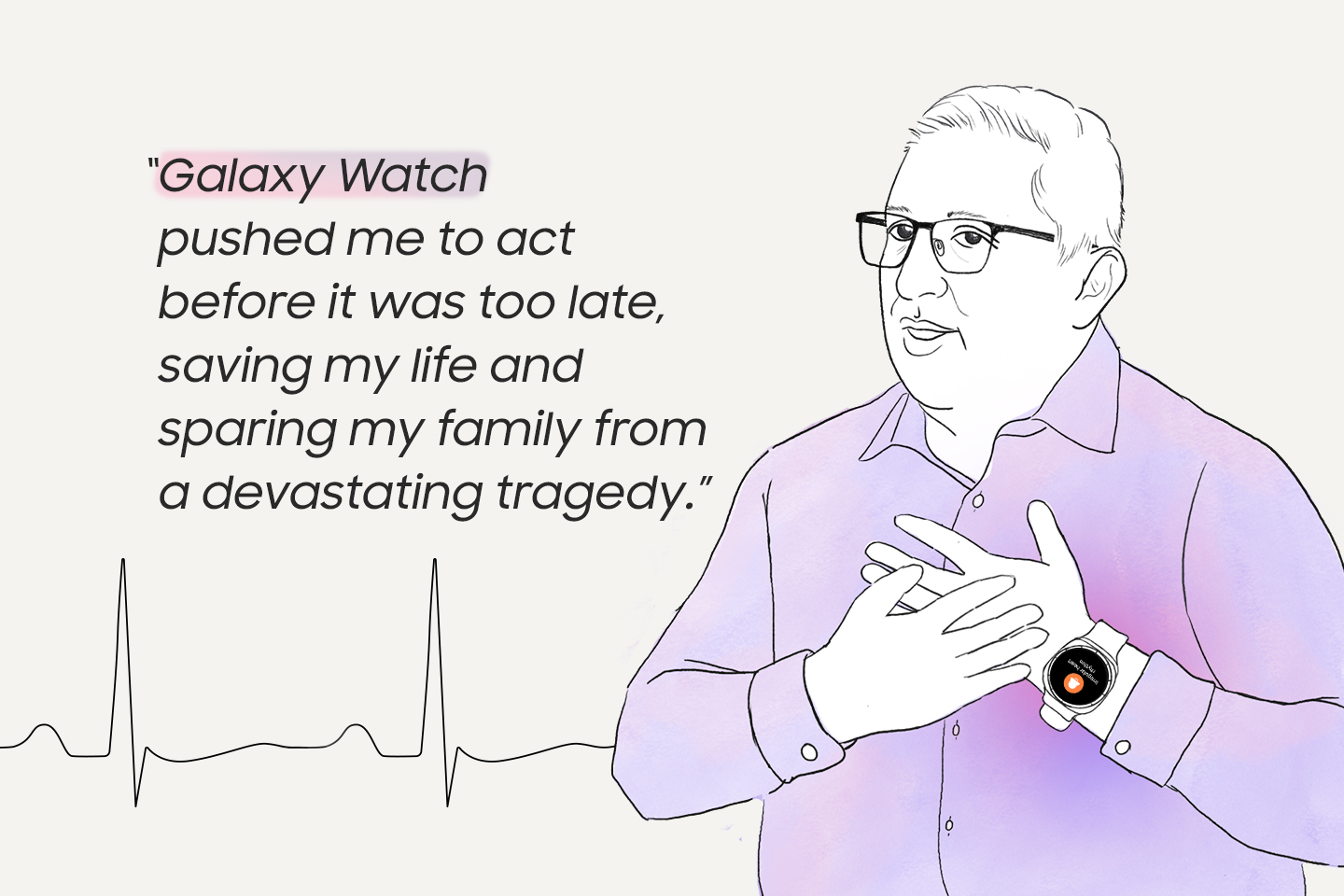When Every Second Counts: Galaxy Watch Series Health Features Help Save Lives
“I could have collapsed at any moment.”
That’s how Roberto Gallart describes his health on the pivotal day his Galaxy Watch6 alerted him to a life-threatening heart condition. A single notification prompted him to seek help – a decision that ultimately saved his life.
Gallart’s story is one of many showing how Galaxy Watch goes beyond expectations – detecting hidden health risks, supporting preventive care and providing insights that can guide life-saving action when it matters most. Samsung Newsroom shares stories from users whose lives were saved thanks to Galaxy Watch.
Jordan: Irregular Heart Rhythm Feature Detects a Silent Heart Condition

Dr. Ahmad Sharadgah, a Galaxy Watch Ultra user in Jordan, felt perfectly healthy when his new smartwatch began sending multiple irregular heart rhythm notification (IHRN)1 alerts. Despite having no symptoms, the repeated warnings convinced him to go to the hospital – a life-changing decision.
Doctors discovered advanced atherosclerosis,2 a serious heart condition requiring immediate treatment. Without his smartwatch, the condition might have gone unnoticed.
“Thanks to the alerts from my watch, I was able to take action before it was too late,” he said. “Galaxy Watch Ultra not only saved my life but also spared my family from what could have been a devastating tragedy. I’m profoundly grateful.”
Brazil: ECG Feature Helps Detect a Hidden Heart Risk
Let’s return to Gallart, a regular at his local gym in Rio de Janeiro. One day, during his usual workout, a sudden pain shot through his chest.
Startled, he checked the electrocardiogram (ECG) feature3 on his Galaxy Watch6 and noticed four “Inconclusive heart rhythm” readings from that day.
Gallart rushed to the hospital, where doctors found one of his main coronary arteries completely blocked and the other two critically narrowed. Without immediate treatment, his life was at risk.
“I was on the verge of a heart attack and could have collapsed at any moment,” he said. “The ECG feature was instrumental in saving my life. Without its warning, I may not have sought help in time.”
Korea: Blood Oxygen Feature Assists in Mid-Flight Medical Emergency
On a flight from Las Vegas to Seoul, a passenger was found unconscious and unresponsive in his seat. Fortunately, Dr. Jongmo Seo, a medical professor at Seoul National University Hospital, was on board and able to help.
Medical equipment was limited at 30,000 feet, but assistance came from an unexpected source – a Galaxy Watch worn by a flight attendant.
Using Galaxy Watch’s blood oxygen (SpO2) feature,4 Dr. Seo monitored the passenger’s oxygen saturation and pulse in real time. Determining whether the patient’s brain was receiving enough oxygen was the top priority. Guided by the data, he administered emergency care until the passenger regained consciousness and stabilized.
“Without Galaxy Watch, my ability to respond would have been much more limited,” Dr. Seo said. “Having access to real-time data allowed me to guide the emergency response more effectively.”
Innovation Built on Trust and Everyday Health Insights
Every day, people like Gallart, Sharadgah and Dr. Seo use their Galaxy smartwatches to take charge of their well-being – tracking workouts, sleep, nutrition and more. Their trust in Galaxy Watch drives Samsung’s commitment to develop technology that is personal, powerful and there when people need it most.
“We aim to help more people live healthier lives through our technology,” said Jongmin Choi, Head of Health H/W R&D Group, Mobile eXperience, Samsung Electronics. “It’s deeply rewarding to know that Galaxy Watches are saving lives in critical moments. We’ll continue to create innovations that truly make a difference for people everywhere.”
1 The Irregular Heart Rhythm Notification feature monitors for irregular heart rhythms in the background while the Galaxy Watch is being worn.
2 Atherosclerosis is a disease in which fats, cholesterol and other substances build up in and on the artery walls, restricting blood flow and potentially leading to serious complications.
3 The electrocardiogram feature requires manual activation. Users must place a finger on the home button to record a 30-second reading.
4 The blood oxygen feature uses an optical sensor to estimate blood oxygen levels when the smartwatch is worn snugly on the wrist and the user remains still.
Images (3)